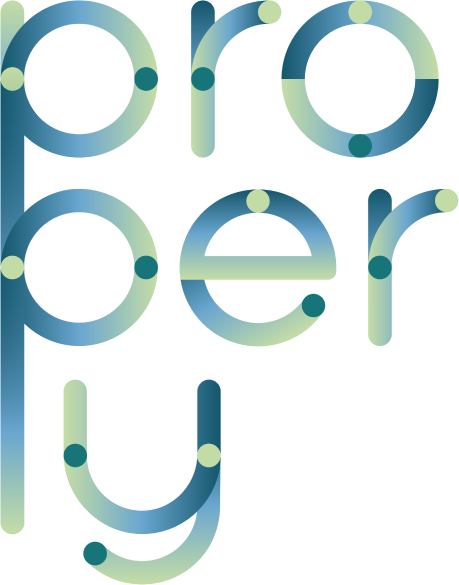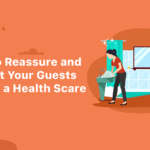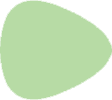With the rapidly evolving situation surrounding the spread of COVID-19, property managers everywhere are thinking about how to reassure their guests and take proper precautions to prevent the spread of infection.
The short-term rental industry is uniquely positioned to provide assurance to guests at this time. Once a property has been correctly disinfected, the only people occupying the property are the guests themselves.
Which means that if you have guests who are concerned about traveling, you can help them feel comfortable keeping their reservations by letting them know your properties are correctly disinfected.
While you certainly already have cleaning standards in place, disinfection requires an additional level of attention to detail and conscientiousness about how germs are spread.
Beyond the current COVID-19 coronavirus, disinfection is an excellent practice during flu and cold season to keep both your guests and your cleaners healthy.
Here’s what to add to your process to properly disinfect your rentals.
How Does Disinfection Prevent the Spread of Illness?
For many illnesses, including the coronavirus, people can spread infection before they themselves show symptoms. Transmission is possible through tiny respiratory particles that are produced when an infected person coughs or sneezes.
If the infected person coughs directly onto a surface, that is an obvious infection site. Less obviously, if an infected person rubs their mouth and then touches a surface, that site is also infected. It’s surprisingly easy to transfer respiratory particles from person to person.
UPDATED INFORMATION: Multiple studies are attempting to determine how long the COVID-19 virus can last on surfaces. An NIH study concluded that it can last for 2-3 days on metal and plastic surfaces, and the Journal of Hospital Infection concluded that if it behaves similarly to other coronaviruses, the maximum time it could survive on some surfaces is nine days. We suggest you presume COVID-19 can be active for as much as nine days until we have more solid information. (Updated March 20, 2020)
This means it’s entirely possible for a guest to check out on Tuesday and infect a guest who checks in on Wednesday – even though you cleaned the property in between those guests.
The typical short-term rental cleaning job will sanitize many surfaces in the property, but it may miss many of the “high-touch” areas of the property that need to be disinfected to prevent infection. That’s why adding steps to your cleaning process is essential.
Protect Your Cleaners First
As we’ve established, it’s possible to transmit this virus from a surface the previous guest touched to your cleaners, which means we want to make sure your cleaners are protected.
This is why it’s a good idea for your cleaners to wear gloves, and to avoid touching their face while cleaning.
UPDATE ON MASKS: Previously, this article did not recommend the use of masks while cleaning, as the virus is primarily transferred person-to-person and a cleaner will not encounter an infected person at the rental. However, new information has proven that asymptomatic people can be contagious and shed the virus onto surfaces, which means the cleaner themselves may have no symptoms of the virus, but still possibly shed the infection while cleaning the rental. While it is unlikely the virus would survive on a just-disinfected surface long enough to infect your upcoming guest, a small chance is not a 0% chance.
We are now recommending that cleaners wear disposable or homemade masks to prevent the spread of the virus in case they are an asymptomatic carrier. We are still recommending that N95 and other medical-grade masks not be used, as they are desperately needed by medical personnel at this time.
Cleaners should not work at all if they have symptoms of COVID-19. It’s highly contagious and your cleaners must understand that they pose a risk to others if they clean your properties while infected.
Before beginning to clean any property, cleaners should:
- Wash their hands immediately on arrival, following correct procedure for hand-washing
- Wash their mobile phone with soap and water (this is important because cleaners often use their phones during a clean to listen to music or podcasts, communicate with their clients, or check off tasks on the Properly app)
- Put on sanitary gloves or rubber cleaning gloves (NOTE: make sure your cleaners know how to sanitize their rubber cleaning gloves after use)
Now that your cleaners are ready to clean, let’s talk about what new tasks they should add to their process.
What to Sanitize
Many of the surfaces in your property simply need to be sanitized. Sanitization means reducing contamination or bacteria on a surface to a safe level. A safe level is pretty darn safe: sanitizers kill or render inactive 99.9% of all known bacteria, viruses and fungi.
You should sanitize, if you are not already doing so, all linens at the property (don’t forget throw blankets!), even if they were not used by the previous guest. Guests may still have opened the closet and riffled through the available linens even if they did not use them – and infection can still linger on those items.
Similarly, sanitize all of your dishes and flatware – not just the ones that the guest used. A guest will touch many of the available forks while rustling around for the one they want – you definitely want to make sure those forks have been through the dishwasher.
Most dishwashers have a sanitization setting, which simply means the water is hot enough to kill 99.9% of bacteria. This is 150 degrees Fahrenheit; 65 degrees Celsius.
Sanitization is perfectly reasonable for the vast majority of surfaces – one of the reasons handwashing is so effective at fighting against COVID-19 is that soap and water disrupts the virus.
However, some surfaces get more contact and deserve more attention than others. Which is when we turn to disinfection.
What to Disinfect
Disinfection means killing everything on a particular surface, and it means you’ll be using stronger cleaning products. During this time, it’s not a bad idea to replace all of your cleansers for all surfaces with an approved disinfecting product.
Be sure your cleaner is using an approved disinfecting product. The Center for Biocide Chemistries has produced a list of products that can be used to disinfect against COVID-19. Make sure the cleanser you’re using is safe for the surface you intend to use it for. Bleach products, for example, are not safe for some surfaces.
You should make sure the cleaner knows the correct “dwell time” for the product you’re using. The dwell time or contact time is the amount of time the product needs to sit on the surface to be effective. It will be listed on the label of the product.
You will want to disinfect entirely the room where bodily fluids are most likely to linger – the bathroom. Every surface in the bathroom should be disinfected with an approved cleanser.
You’ll also want to disinfect high-touch points in your property, which include:
- Light switches, outlets, lamp and fan pull-chains and switches
- Window sills, pulls, and handles
- Cabinet pulls and knobs
- Controls for large appliance and electronics (washer and dryer, dishwasher, stove)
- Controls and cords for plug-in appliances and electronics (coffee maker, toaster, television, hair dryer)
- Temperature controls
- Hangers and luggage racks
- Bureau drawer knobs or pulls
- Remote controls
- Amenities like soap, shampoo, and cleaning supplies
- Toys, games, and child guest amenities like high chairs
- Stair railings and outdoor porch railings
Have a lot of cloth furniture at your property? Take a moment to spray your couches and easy chairs with a disinfecting spray like Lysol – which is included on the list of approved disinfectants. Make sure you select a cleanser that is safe for use on the fabric your furniture is made of.
Commonly overlooked but critical disinfection areas:
- Indoor trash bins (disinfect the entire outside and inside of the bin)
- Cleaning supplies (do you provide dishwasher pods, laundry detergent, sponges? Disinfect all of them – and replace that sponge with a brand new one)
After they’ve completed the clean, your cleaner should make sure to walk through the property and disinfect all door knobs and handles. It’s helpful to do this step last, as it is easy to re-infect a door knob as the cleaner goes in and out of rooms to complete the cleaning process.
Finally, make sure your entry process is disinfected. The keypad, lockbox, or keys should be disinfected to make sure your guest arrives to a pristine property.
Pay Your Cleaner for Additional Time
Your cleaner is likely as concerned as you are about reduced travel and cancelled bookings. Cleaning properties is how they earn their bread and butter.
When you ask your cleaners to complete additional tasks to disinfect your properties, make sure you also pay them for the additional time and effort.
As an industry, we all need to make sure we’re looking out for one another. Your cleaners have been putting in hard work for you over the years. Giving them some extra work for each booking benefits them and it ensures your properties will be safe for your guests.
Adding a disinfection process to your turnovers is a great way we can all give each other a little peace of mind during a difficult time.
During this difficult time, Properly is creating free resources to help property managers protect and inform themselves, their guests, their owners, and their service providers. You can find all of those resources here at Everything Property Managers Need to Know About COVID-19.
You can also sign up for our newsletter Properly Informed to get new resources delivered directly to your inbox.




